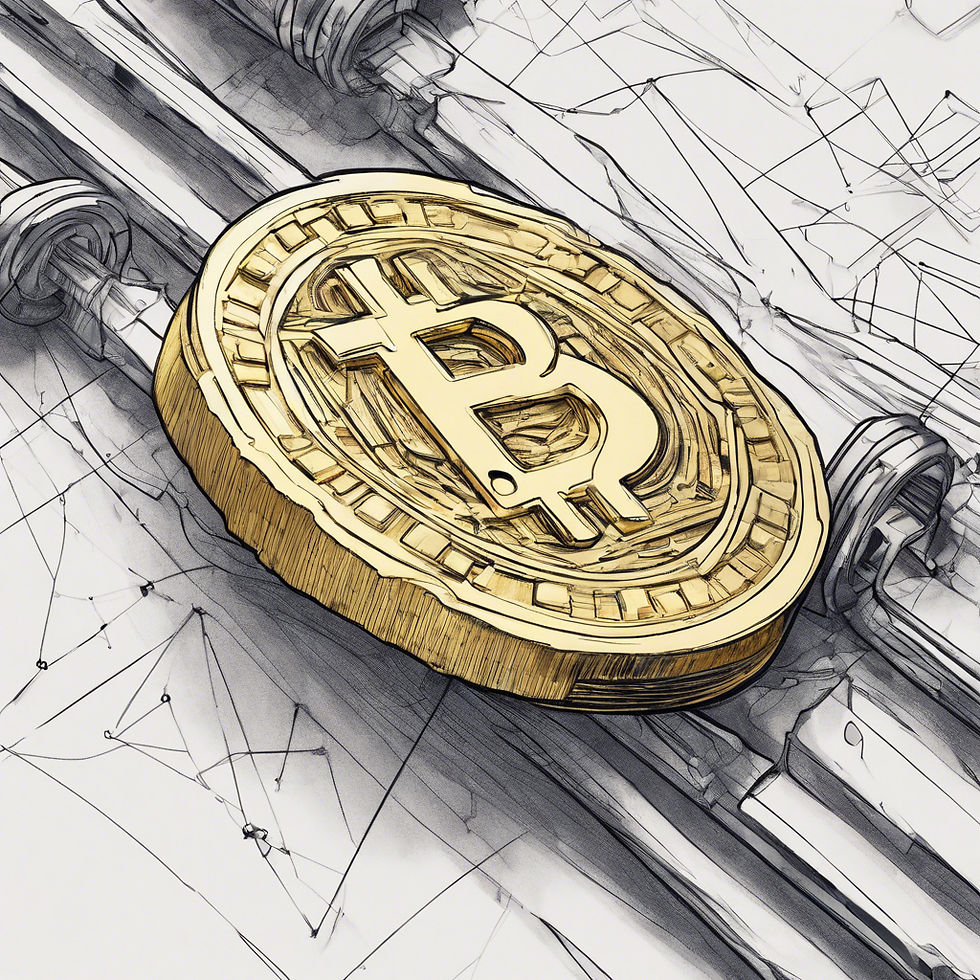Key Considerations Before Exploring Kinesis Money — Connecting Precious Metals to Blockchain
- johnwick

- Oct 29, 2024
- 4 min read

If you're a fan of precious metals like gold and silver, you might already be familiar with the concept of integrating Real World Assets (RWAs) with blockchain technology. Kinesis Money has been a pioneer in this space for the past five years, specifically focusing on gold and silver.
In this article, we will explore Kinesis Money in detail, discussing its functionality and whether it presents a worthwhile investment opportunity. If you prefer a quick overview, feel free to jump to the summary section.
Understanding Kinesis: How It Operates
Kinesis is designed to enable individuals to access, mint, and store their bullion using specific Kinesis tokens: $KAU, which represents one gram of gold, and $KAG, representing one ounce of silver. Currently, Kinesis reports that the total value of $KAU and $KAG tokens in circulation exceeds $150 million.
Both tokens are fully backed by physical gold and silver, redeemable for the actual metals with a fee of 0.45% plus delivery costs. These tokens operate on the “Kinesis Mainnet,” a variant of Stellar, and are available for trading on several exchanges, although liquidity remains limited.
This raises an important question: what advantages do users gain by storing their bullion through Kinesis rather than through other means? Let’s explore the potential benefits.
Earning Yields with Kinesis
Kinesis serves as both an investment platform for gold and silver and a trading exchange, offering yields through various methods. It’s important to note that potential earnings do not translate into high annual percentage yields (APY) directly. Instead, participants receive a portion of the “master fee pool,” which aggregates fees from the entire Kinesis ecosystem.
For the purpose of this article, we'll break down two yield types: the holder's yield and the $KVT yield.
Holder's Yield
One of the main attractions of Kinesis is the ability to purchase bullion at or just below market price through $KAU and $KAG. Investors are incentivized to retain these tokens to earn “Holder’s Yield.” However, determining the exact yield can be challenging, as Kinesis’ dashboard provides cumulative yield data rather than yields based on the total value locked (TVL) in underlying assets.
Insights from various sources suggest that historical yields have fluctuated between less than 1% and approximately 10% annually. The variability in the master fee pool indicates that monthly earnings can range dramatically, from nearly $3 million to less than $100,000.
To illustrate this with hypothetical figures:
If Kinesis had $100 million in TVL and you owned $1,000 worth, you’d possess 0.001% of the total value.
Assuming a master fee pool of $120,000 for a month, your portion of the holder's yield would be calculated as follows:
$120,000 x 0.15 x 0.00001 = $0.18.
This implies that a $1,000 investment would yield about $0.18 over one month, translating to an annualized rate of roughly 0.22%. While September 2023 may have been a lower-earning month, it highlights the potential for volatility in earnings.
What is $KVT?
The third token in the Kinesis ecosystem is $KVT, known as the “Velocity Token.” Unlike $KAU and $KAG, $KVT operates as an ERC-20 token and can be tracked via Etherscan. Currently, it trades around $2,000 per token and has been stable since June 2023.
$KVT holders benefit from a 20% share of the ecosystem’s total revenue, distributed in $KAU or $KAG tokens. With a maximum supply of 300,000 tokens, there are currently 687 unique holders. Notably, $KVT does not appear to be listed on major tracking sites, indicating it circulates exclusively within the Kinesis ecosystem and is not available for trading on external markets.
Additional Considerations
Now that we have an overview of how Kinesis functions, let’s delve into other crucial aspects:
Audits and Inspections: Kinesis has undergone multiple audits, the latest being in July 2023. These audits were conducted by Bureau Veritas, a reputable entity in commodity inspections. While these audits confirm the existence of gold and silver, they do not provide insights into loan activities or specific asset serial numbers.
Transparent Leadership: Kinesis boasts a publicly accessible team on LinkedIn, adding a layer of accountability. While having a transparent team does not guarantee protection against failure, it can provide avenues for recourse in case of issues.
Transparency Concerns: Many criticisms directed at Kinesis revolve around its perceived lack of transparency. This is a common issue within the crypto space, where users demand higher transparency standards compared to traditional finance (TradFi) systems. Kinesis seems to prioritize the blockchain as a record-keeping tool rather than focusing solely on code audits.
Summary
In the current market landscape, Kinesis may not offer extraordinary yields overnight. However, proponents of precious metals often view investments as a hedge against fiat currency instability. Kinesis provides a custodial solution without storage fees, and its pricing is competitive.
While questions regarding transparency and the overall ecosystem persist, Kinesis appears to be a viable option for purchasing gold and silver near spot prices. Individual investors must assess their risk tolerance and determine if Kinesis aligns with their investment goals.
For those interested in further information, consider reviewing the following resources:
Kinesis Whitepaper
Kinesis Chain Explorer
Forums discussing responses to transparency concerns
Have you used Kinesis? I’d love to hear about your experiences in the comments below. If you’re curious to explore Kinesis further, signing up is free.
Disclaimer: This article is for educational and informational purposes only and does not constitute financial advice. Always conduct your own research before making investment decisions.



Comments